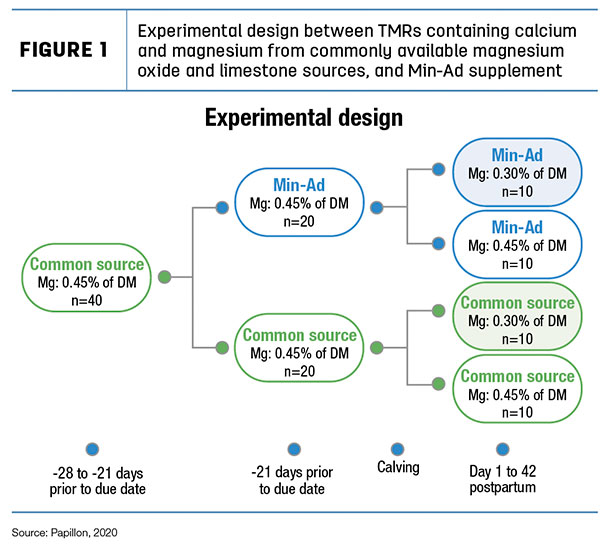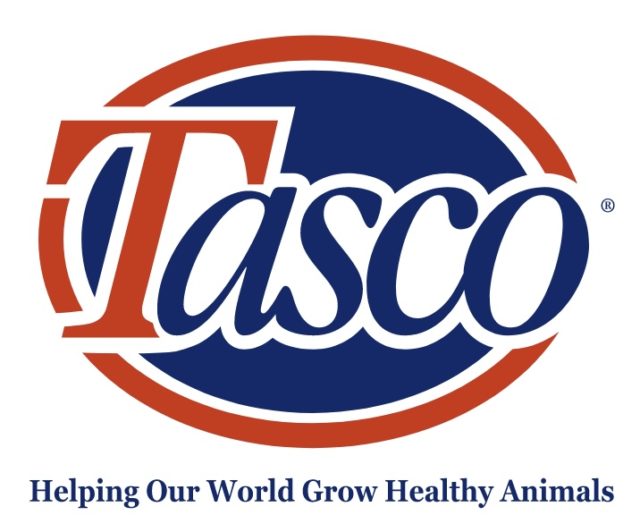Hypocalcemia and ketosis
Hypocalcemia (low blood calcium) is due to the cow's sudden demand for calcium for inclusion in milk, paired with a relatively slow adaptation of the body to provide increased calcium. Ketosis is caused by the sudden increase in demand for energy, resulting in the mobilization of body reserves and the overwhelming of the liver with ketones. Maintaining dry matter intake and healthy body condition scores through the dry period are the best ways to avoid ketosis. Preventing these diseases helps make the transition to lactation as smooth as possible and is one of the keys to ensuring cows have a healthy and productive lactation.
Measuring the benefits of buffers
There are numerous additives and nutrition strategies targeted at providing optimal nutrition to transition cows, however, the use of buffers in transition cows has not been extensively measured, particularly in the close-up period. Traditional wisdom would suggest that since pre-fresh diets tend to be lower in fermentable carbohydrates and pre-fresh intakes are lower, the benefits of adding a buffer would be limited. However, recent work at Cornell University by Dr. Tom Overton and Dr. Brittany Leno suggests inclusion of a high magnesium and calcium buffer proved beneficial in pre-fresh diets.
The trial was conducted primarily with the goal of evaluating the effects of magnesium and calcium pre- and post-calving. Maintaining calcium homeostasis around calving is a challenge because of the sudden increases in calcium demand due to lactation, thus cows often suffer from hypocalcemia. Magnesium plays an important role in calcium homeostasis, and several studies and meta-analysis have corroborated that feeding increased magnesium during the pre-fresh period can reduce hypocalcemia. Treatments were set up such that at 21 days prepartum, 41 pre-fresh cows were divided into two groups, with each group receiving a total mixed ration (TMR) containing the same level of dietary magnesium (0.45% of dry matter). One TMR contained calcium and magnesium sourced from commonly available magnesium oxide and limestone and the other primarily from our calcium magnesium carbonate supplement (MIN-AD). Thus, cows were supplemented with roughly 10.5 oonces of our supplement or 2.4 ounces of magnesium oxide.
Testing the hypothesis
Our supplement is a calcium and magnesium carbonate mined specifically for use in ruminant diets. It is a highly bioavailable source of calcium and magnesium, as well as an alkalizer. Alkalizers are compounds, such as magnesium oxide and magnesium carbonate, that raise the pH of a solution in direct proportion to the amount of product added, as opposed to buffers, which stabilize the pH within a narrow pH range. The pre-fresh diets were also managed to provide a dietary cation anion difference (DCAD) level of -11 milliequivalent per 100 grams of dry matter (mEq/100g of DM). After calving, 20 cows on each pre-fresh treatment were assigned to either a high-magnesium treatment (0.45% of DM) or a low-magnesium treatment (0.30% of DM) and followed for the first 42 days in milk. This resulted in a total of four treatment groups, which are detailed in Figure 1. The hypothesis was that the higher level of magnesium as well as the calcium magnesium carbonate supplement would improve mineral status of the cows and in turn improve intake and performance of the cows.

One of the most significant findings of the trial was an increase in prepartum dry matter intake (DMI) for the cows fed our supplement. Intake in both groups of pre-fresh cows was high, at 35 pounds of dry matter in the common source group and 37 pounds of dry matter in the supplement group. However, the 2-pound increase in DMI for the supplement-fed cows was significant and led to improved energy balance of the cows going into the transition. This effect on intake and energy balance did not carry through to the postpartum period, though body weight change and body condition score change both tended to support the concept that there was less tissue mobilization postpartum in the supplement-fed cows. There also was no effect on milk yield between any of the treatments, however, the supplement-fed treatments both exhibited significantly higher milkfat percentage (4.8% versus 4.25%) and yield (4.0 versus 3.5 pounds per day) in the first week postpartum. Traditionally, increased milkfat during the first week post calving would be a telltale sign of significant tissue mobilization due to negative energy balance and reason for concerns about ketosis and other metabolic disorders.
In this study, however, the supplement-fed cows with elevated milkfat levels also tended to have lower circulating non-esterified fatty acids (NEFA) (604 verus 512 microequivalent per liter (µEq/L)). The mineral status of the cows in the trial was not significantly altered by any of the treatments, potentially due to intakes that were higher than predicted, which may have resulted in adequate mineral supply in all treatments.
The transition from pre-fresh diets to lactating diets containing greater amounts of highly fermentable carbohydrates has been shown to lead to subacute ruminal acidosis. The alkalizing capabilities of our supplement during the pre-fresh period appear to have primed the rumen to handle this transition better than the common source magnesium oxide. This benefit shows up most prominently in the improved energy balance of the supplement-fed cows through transition coupled with increased milk energy output in the first week postpartum. Though magnesium oxide is theoretically a better buffer than calcium and magnesium carbonate, independent research has shown wide variability in the solubility of magnesium oxide, leading to lower actual buffering ability. These results suggest utilizing a highly bioavailable calcium and magnesium dolomite, such as our supplement, to not only supply magnesium (which helps prevent hypocalcemia) but also to help maintain healthy rumen fermentation and thus DMI as cows calve and transition to lactation.
Economic impact
Applying this feeding strategy on commercial dairy farms can have significant beneficial cow-health and financial implications. Calcium magnesium carbonate supplementation improved energy balance through transition and improved milkfat yield postpartum, while maintaining blood calcium status and without increasing ketosis incidence. Improvements to performance, such as increased milkfat yield, can result in substantial financial benefit dependent on market conditions. Additionally, feeding this supplement typically reduces diet cost by approximately $0.04 per cow per day, if fed as recommended, depending on supplement costs, sodium bicarbonate and magnesium oxide, a total of $14,600 per year savings for a 1,000-cow dairy. Collectively, better cow health along with cost savings from supplement inclusion can result in additional income to the farm, value producers can’t ignore with today’s volatile milk market. ![]()
References omitted but available upon request. Click here to email an editor.
Sarah Stocks is a technical services manager for Papillon Agricultural Company. Email Sarah Stocks.

-
Clayton Stoffel
- Technical Service Manager
- Papillon Agricultural Company
- Email Clayton Stoffel








